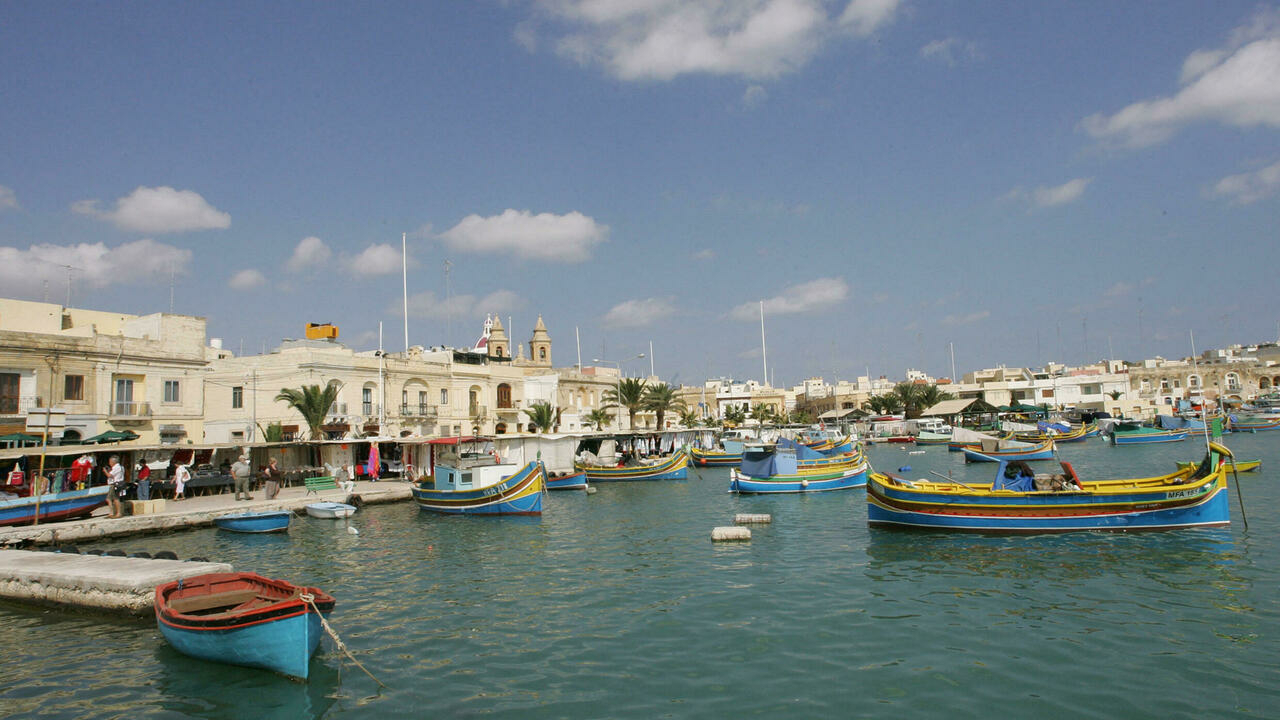Coastal erosion is tipped to be the agenda at the COP26 climate conference on Monday
In Europe sea levels could reach 37cm by 2080, causing land loss that threatens infrastructure, livelihoods and heritage sites.
As climate change causes sea levels to rise around the world, typically it is small island nations that sound the alarm at events like COP26.
Last week, Prime Minister of Barbados Mia Mottley told attendees at the conference in Glasgow that a 2-degree Celsius rise in global temperatures would cause an increase in sea levels equivalent to a “death sentence” for the Caribbean island. Tuvalu Foreign Minister Simon Kofe stood knee-deep in the sea around the South Pacific island to illustrate the scale of the problem as he filmed a video statement to send to the summit.
Tuvalu’s Simon Kofe recordinga video message for COP26
When you can’t travel to @COP26 – or you don’t want to (because of the massive carbon footprint associated with travel), then why not remote in. & when doing that, send a proper message. A Minister in Tuvalu, Simon Kofe today recorded a video statement for #COP26 doing just that pic.twitter.com/haqH5yX2ou
— International Coral Reef Society (@ICRSCoralReefs) November 5, 2021
But in Europe too, climate change is having a dramatic impact on the shoreline as rising seas mean waves hit the coast at higher levels, and increasing storms and changes in wind direction join forces to wear land away.
Part of the problem is that coastal populations and human infrastructure is increasing around the world, even though the coastline naturally fluctuates, Larissa Naylor, professor of geomorphology and environmental geography at the University of Glasgow, told FRANCE 24. “The issue is that we’ve fixed the coast and we’ve fixed assets at the coast. Around Europe we’ve got hotels, roads, houses, railways along a boundary that is fluid.”
Naylor says rising sea levels add an “extra layer” to factors already at play. For example, if a spring tide happens to coincide with a storm, the added complication of rising seas amplifies the overall impact. “As climate change accelerates there’s going to be much more loss and damage in these coastal contexts. Society will increasingly be impacted,” she says.
Livelihoods and infrastructure at risk
This is happening faster in some areas than others.
On the Yorkshire coast in north-east England an annual average of four metres disappear each year, but last year figures from the local council showed that in a two-mile stretch, 10 metres disappeared in just nine months. Some 20 homes are thought to now be at risk of falling into the sea.
In Ireland, Irish Rail last month announced plans to invest millions to counter “alarming” rates of erosion near coastal railway lines, Irish daily The Journal reported.
Further south, livelihoods are at stake. A 2017 Greek study found that up to 88 percent of all the country’s beaches — essential to the national tourism economy — could be completely eroded by the end of the century, with large scale land losses also predicted in seaside resorts in France, Spain, Portugal, Italy.
Read Also Battle the algorithms: China’s delivery riders on the edge
Even so, data giving an overview of the situation on the continent is lacking. The last European Union study of coastal erosion dates back to 2004, when it found all countries with sea access in the EU were experiencing some form of coastal erosion and 20 thousand kilometres of coastline faced serious impacts.
Although rising seas and coastal erosion are a global problem, it poses a unique risk in Europe due to the continent’s high ratio of shoreline to land. Yet there is no Europe-wide strategy for fighting coastal erosion and many nations do not have cohesive plans, instead leaving regional governments to work out — and fund — their own solutions.
This is partly because public awareness of the issue is lower than for issues like flooding, but also because tackling the problem means a change in approach, from fighting land loss to accepting it.
Naylor is a specialist in rocky coastlines that naturally erode more slowly than sandy beaches but are still disappearing. “And once the rocky coastline goes, you can’t glue it back on,” she says. It is an impact that cannot be reversed or reduced, but needs to be accepted and adapted to. “We’re not necessarily ready to do that as a society,” Naylor says.
Read Also At least 19 people were killed and three injured Saturday in an accident on the highway
Accepting the inevitable
Some places have already started to do this. In Quiberville-sur-Mer in Normandy, Mayor Jean-François Bloc told FRANCE 24 that in order to protect infrastructure close to the water’s edge, the city used to rely on concrete fortifications at the bottom of its cliffs and a long, concrete drainage ditch separating the beach from the town, but these needed to be rebuilt and strengthened after each big storm.
“As the water rises, and as the storms get stronger and stronger due to global warming, it’s clear that this is not enough anymore,” he said. “We will not be able to keep going like we were indefinitely.”
Now the town plans to simply accept that the coast is moving, and to let erosion happen, by relocating houses close to the coastline.
Further south on the French Atlantic coast, the town of Saint-Jean-de-Luz is trialling a similar plan to manage coastal erosion of 25cm a year. Local officials have committed €6.4 million to moving at-risk campsites, restaurants, bars and a water purification station to safer inland locations.
This approach brings its own challenges, Naylor says. “How do we fund the moving of communities? How accepting are the communities inland of these people coming into their space?”
As the scale of the issue grows, the difficulties of moving communities will have a greater impact on European countries’ existing infrastructure and spending. She says: “The committee on climate change report for England has said that in 2018 there were 8,000 properties at risk of erosion in England and by 2100 it’s going to be 100,000. That will be the same in other parts of Europe with soft coasts. How do we manage that as a society?”
When a Taliban militant meets Afghan pop star Ayrana Sayeed, he tries to charm her
Protecting against change
Another option is building to protect existing land using what Naylor describes as a “traditional conventional hard engineering approach” or “greener, nature-based solutions”.
In Malta, the capital city Valletta dates back to the 16th century and is one of 42 World Heritage Sites at risk of coastal erosion in the Mediterranean. Ten kilometres away the town of Marsaxlokk has opted for the first solution. Last month officials announced a €2 million effort to limit erosion by installing 70 metres of groynes – temporary structures made of limestone bricks.
The limestone barrier will extend out from the dock into the sea, forming a protective wall to catch sand and other sediment that would otherwise be washed away from the shore.
This is similar to a technique used in Holland, where 12 million cubic metres of sand are used to replace what gets washed away from the coastline. While groynes last up to 25 years, the sand must be replaced every year as the problem worsens. It is expected that greater volumes of sand will be needed, meaning greater costs.
Such systems can also be built in a more eco-friendly way to make them habitable for local species. Earlier this year Portsmouth, UK, announced plans to build a two kilometre sea defence wall that is habitable for rocky shore species, making it the largest structure of its kind in the UK. The issue here is the costs involved. “It isn’t just the cost of building it, there’s repair and maintenance costs as well. It’s phenomenal, eye-watering amounts of money,” says Naylor.
She adds, “We’re not necessarily costing all the economic benefits over a long enough time. Yes, you can rebuild a wall now and it might only be a metre or two higher than the wall before, but what happens in 80 years’ time? Who pays then? We need some requirements to start looking at long-term climate risk.”
Read also Iraq’s Prime Minister Mustafa al-Kadhemi was “unharmed” in a “failed assassination attempt”
Adaption, loss and damage
She is hopeful such issues may be raised at COP26 on Monday, November 8, when talks are dedicated to adaptation, loss and damage.
One example she points to as successful is a recent project in Edinburgh to build blocks of flats on the water’s edge. Instead, the contractors agreed to install a coastal park as a buffer between the sea and the new buildings. This meant making space for nature and for erosion and accepting that, “by accommodating erosion you lose some land”.
Putting this kind of change in attitude on the agenda and introducing government frameworks promoting such measures is crucial, Naylor says. “Adaptation really needs to come up the agenda and be on an equal pegging to mitigation. If that happened it would help things like the need to adapt to coastal erosion become more mainstream.”
As a recent study from the World Meteorological Organisation found that the rate sea rises have doubled to 4.4 since 1993, one thing that is certain is that more thoughtful and long-term solutions will be needed.
Fundamentally, Naylor says, it comes down to “making decisions now that don’t commit future generations to huge amounts of loss and damage”.
SOURCE AFP



